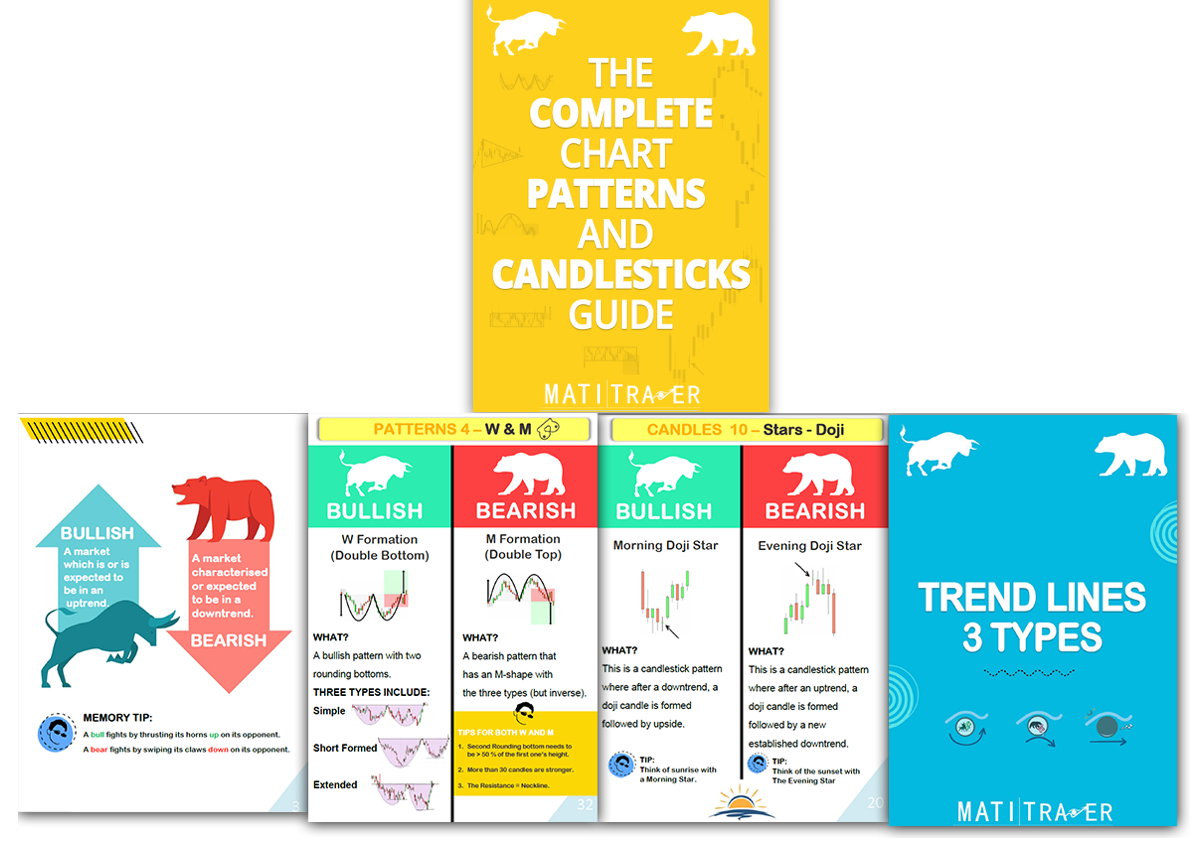16 Golden Risk Management Rules for Traders
Reading this will be WORTH IT – I promise.
To build your portfolio.
You need to learn to manage your risk.
And over the last 16+ years, I’ve given you maybe five ideas on how to do it.
Well, today I have 16 of the most essential Risk Management rules I could come up with in just one seating.
They might not all apply to you.
But most of them I believe will definitely resonate with you, your portfolio and with your risk profile.
So, I have taken the time, energy and effort to jot down the 16 most powerful Risk management rules, you can apply to your trading.
Starting today…
Here they are…
RULE #1:
The 2% Rule
Never risk more than 2% of your total trading capital on a single trade.
This rule will help you to limit the impact of any single trade on your portfolio.
RULE #2:
The Probability Rule – Classify trades as high, medium, or low probability
This depends on your trading strategy.
If you know how to spot a:
High probability trade (HPT) (good chance of winning).
Medium probability trade (MPT) (lower chance of winning).
Low probability trade (LPT) (very low chance of winning).
I have a very simple rule.
With a HPT, risk 2% of your portfolio.
With a MPT, risk 1.5% of your portfolio.
With a LPT, risk 1% of your portfolio
Only risk according to the state of the probabilities of the trade – right?
RULE #3:
20% Drawdown Rule – Halt trading at a 20% loss to avoid deeper slumps
If that inevitable Drawdown kicks in.
And your portfolio drops 5%, 10% and then down to 20%.
Halt trading. Don’t stop!
Instead, move over to paper trade your account until the conditions turn up and the system works again.
And when you do start, only start risking 1% at a time until you are confident again with your strategy and with your frame of mind.
This rule alone, you’ll save you from blowing your account.
RULE #4:
NEVER risk money you can’t afford to lose
If you feel emotionally tied to your money.
Or you need the money for daily living expenses or retirement savings.
Don’t trade with it.
You will feel like a wreck. Instead of enjoying the trading journey and process.
Trading will be an emotional rollercoaster during both winning and losing streaks.
RULE #5:
The Time Stop-Loss Rule – Apply a time-based stop-loss rule to limit losses
If a trade doesn’t reach its profit target within a specific timeframe – Close the trade.
I have a 7 week time stop loss before I consider closing trades.
Either you’ll bank a lower loss than you planned. Or you will bank a lower profit than planned.
This prevents capital from being tied up in stagnant trades.
NOTE: There are times where I might NOT implement a time stop loss. For example, when I short (sell) a trade which earns interest income each day.
RULE #6:
The Trailing 1:1 Rule – Use a 1:1 trailing stop-loss to protect profits
Once a trade hits a 1:1 risk-reward ratio.
I might trail my stop loss up to just above break even.
This way I will bank a minimum gain, should the trade turn against me.
My win rate will go up, for the portfolio.
And emotionally it’s easier to hold a trade where you’ve secured a minimum profit.
RULE #7:
Half off Rule – Take half your profits early to secure gains
If the trade is moving nicely in my favour.
And it reaches a R:R of 1 to 1. Sometimes I’ll close half my position.
I’ll then trail my stop loss to above breakeven.
This way I’ll bank a decent profit.
And I would have left room for the market to continue rallying to my initial take profit.
This rule alone is God-sent.
RULE #8:
The 1% Margin Rule – Limit margin use to 1% of your account to control risk
For those who are worried about HIGH leveraged instruments.
This one is for you.
The rule is, if you’re trading on margin (leverage).
Never risk more than 1% of your trading account on a single trade.
This way:
You’ll have majority of your portfolio to trade with.
You’ll have less money exposed to risk in any one trade.
You’ll be able to track your risk better, for if the market gaps.
RULE #9:
The Intraday Stop Rule – Set an intraday rule to know when to stop trading for the day
If you take on an intraday trade i.e. Smart Money Concepts trading a Forex Pair or index.
Set a daily loss limit or a maximum number of losses.
If you reach this amount, stop trading for the day to prevent your portfolio from spiralling into more losses.
Come back the next day, to slay.
RULE #10:
Forex NEWS Rule – Stay off the market during high-impact news events
This happens during high-volatile events.
And this applies with mainly Forex!
If there are any high impact news events such as major economic announcements.
It can significantly increase trading risks.
When these days come, I don’t take any Forex trades.
Here’s are the main High-Impact-News events:
-
CPI (Consumer Price Index) news report days
CPI measures the changes in prices of a basket of goods and services over time as a measure of inflation.
-
NFP (Non Farm Payrolls)
A monthly report released (on the 1st Friday of the month) by the US
Department of Labor. It shows the number of jobs added or lost in the non[1]farm sector. This is a measure of the health of the US economy.
-
PPI (Producer Price Index)
A measure of the average change over time in the prices that domestic producers
receive for their goods and services. This is another measure of inflation and economic growth.
First with CPI and then with PPI.
-
FOMC (Federal Open Market Committee)
When the FOMC the US Federal Reserve meets to set monetary policy, (decision on interest rates and the money supply).
RULE #11:
The Risk-Reward Rule – Aim for a risk-reward ratio of at least 1:1.5
If you do NOT see a trade with a Risk to Reward of at least 1:1.5.
It is NOT a good idea to trade.
Anything less than 1:1.5, and your risk will be similar to what you are looking to gain.
And remember, you still need to cover costs, brokerages and daily interest charges.
It’s not worth buying and selling trades with a R:R of 1:1.5.
I prefer to trade with risk to rewards of 1:2 instead.
That way, even with a 40% win rate, I’ll be profitable.
RULE #12:
The 20% Golden Rule – Never expose your portfolio to more than 20%
Trading is a risky biscuit.
So, even though you have money in your account.
Doesn’t mean you should have all of your money in different markets.
I like to limit my capital to a maximum of 20% of my total investment portfolio.
Remember, you are gearing up when you trade.
While leverage can magnify gains, it can also magnify losses.
It’s crucial to know how to use leverage effectively.
Also, it’s our job to and avoid taking on more debt than we can handle.
Because when you trade on margin (leverage), you’re exposing yourself to MORE than what you deposit.
So protect most of the capital at a time in your portfolio.
RULE #13:
The Hedgehog Rule – Don’t be too long or too short – Hedge your positions
I like to say hedge your positions.
Don’t HOG on too many longs. Or too many shorts.
When a main index is showing strong signs of moving in a certain direction (up or down).
You may feel the absolute need to buy as many stocks as possible, to ride the trend.
However, you need to remember the market can change the trend direction just as fast.
And your winning positions can instantly turn to losers.
So, when you are holding a high number of longs, make sure you trade a couple of shorts.
When you are holding a large number of shorts, make sure you trade a few longs.
This way you can hedge your positions in case the market does make a turnaround.
Effective hedging strategies can protect your portfolio from market volatility.
RULE #14:
Multi-Account Rule – Use different accounts for different markets
Every market acts differently.
Forex works differently to stocks.
So, I like to have two different accounts for each.
I like to track and trade Forex for one account and stocks for another.
Having too many eggs in one basket, will skew the portfolio and your track record – due to the sporadic and different movements with each set of markets.
So, diversify your portfolios across different asset classes and markets to manage risk.
RULE #15:
Check Up Rule – Regularly monitor your portfolio’s performance
The markets are always changing including:
-
Algorithm
-
New volume being injected in the markets
-
Dynamics of demand and supply
This causes a shift in different market environments and echoes into the financial world.
Therefore, you need to regularly review your portfolio.
This will help you to realign it with your goals, statistics, drawdown & reward management as well as your risk tolerance and goals.
RULE #16:
Correlation Rule – Understand and monitor the correlation between assets
Markets are generally positively correlated.
This means, they tend to move in the same direction.
If you see a large bank company going up in price and you go long, the chances are good that other banking companies are also going up in price (within the main stock market).
When you understand correlation between stocks, forex, indices, commodities etc…
You can find more high probability trades which will better diversify your portfolio, reduce your risk and you’ll be exposed to other market opportunities in similar markets.
Told you it will be worth it!
Save this, print it out and keep it by you.
These are the most important money management rules I believe are necessary to know as a trader. Below is the summary of them again, with the subheading.
If you found this helpful, please send me an email to timon@timonandmati.com
I’d love to hear from you…
16 Most NB* Money Management Rules
RULE #1: The 2% Rule – Never risk more than 2% of your trading capital
RULE #2: The Probability Rule – Classify trades as high, medium, or low probability
RULE #3: 20% Drawdown Rule – Halt trading at a 20% loss to avoid deeper slumps
RULE #4: NEVER risk money you can’t afford
RULE #5: The Time Stop-Loss Rule – Apply a time-based stop-loss rule to limit losses
RULE #6: The Trailing 1:1 Rule – Use a 1:1 trailing stop-loss to protect profits
RULE #7: Half off Rule – Take half your profits early to secure gains
RULE #8: The 1% Margin Rule – Limit margin use to 1% of your account to control risk
RULE #9: The Intraday Stop Rule – Set an intraday rule to know when to stop trading for the day
RULE #10: Forex NEWS Rule – Stay off the market during high-impact news events
RULE #11: The Risk-Reward Rule – Aim for a risk-reward ratio of at least 1:1.5
RULE #12: The 20% Golden Rule – Never expose your portfolio to more than 20%
RULE #13: The Hedgehog Rule – Don’t be too long or too short -Hedge your positions
RULE #14: Multi-account Rule – Use different accounts for different markets
RULE #15: Check Up Rule – Regularly monitor your portfolio’s performance
RULE #16: Correlation Rule – Understand and monitor the correlation between assets

Trade well, live free.
Timon Rossolimos
Founder, MATI Trader
CONNECT WITH US:
Facebook Group:
http://www.facebook.com/groups/matitrader
Website:
http://timonandmati.com
Discord:
https://discord.gg/c8f37kyv35

Order via our secured website:
Click here to order The Complete Charts Patterns and Candlesticks Guide by MATI Trader book
Or order via EFT payment”
Click here to order the book via EFT (all info in the invoice).
Enjoy and remember…
You won’t need to buy or order another book on chart patterns and candlesticks ever again as I will be updating it very often and will let you know.
Not sure the best way to get started with MATI Trader?
Follow these steps to start your successful trading journey.




